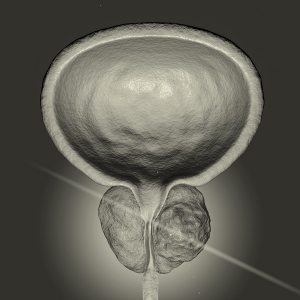 The new tiding for people with a benign enlarged prostate: laser evaporation (NILI)
The new tiding for people with a benign enlarged prostate: laser evaporation (NILI)
According to data gathered until today, the rate of men in their 40s and up who suffer from a benign prostate tumor (BPH) is about 80%. Half of them will have various clinical effects like problems urinating, disruptions with sexual relations and more. For 15% of them, the problem would require some surgical intervention.
The most common surgery for this problem is the Turp, performed in “closed” access (without cutting the skin) – resection of the prostate through the man’s urethra. Another surgical action that’s becoming popular lately is laser evaporation surgery (also called green light laser). This surgery is performed with 120 W wave intensity and allows the surgeon, just like in the TURP surgery, to plan exactly where to focus and in what areas to “evaporate” the prostate tissue, to reduce its volume significantly.
This method has several important advantages
- Making a large opening that allows free flow of urine quickly upon the completion of the surgery
- Hemostasis (process to stop bleeding) is several times more effective than TURP surgery, which holds risk for great blood loss
- Completing the surgery without washing the urinary bladder (due to hemostasis efficacy) and avoiding insertion of a catheter for a prolonged period of time
- Adjustment for patients who suffer from coagulation problems or those taking anticoagulants
- Use of physiological water (salt solution), which prevents water toxicity and therefore allows longer surgeries, for treatment of particularly large prostates
- Outpatient only, except for special cases
In a comparison made between the therapeutic approaches, after a 5-year follow up of some of the patients, there were no significant differences in the final result, even in the degree of patient satisfaction.
To summarize, we can point to some very significant advantages of the laser treatment for prostate cancer, compared to the TURP surgery. Since the action isn’t inferior in quality and efficacy, these advantages are reinforced.
Nonetheless, it’s important to note that laser evaporation (NILI) requires numbing as of today, it’s considered more expensive than the TURP surgery and requires great skill, which surgeons who performed dozens of prostatectomy through the urethra also need to acquire. You could say, then, that today’s prevalent method will not go away overnight, but now there is a real alternative to it. With the many improvements the field is offering lately, we can certainly declare the beginning of a new era for BPH treatments.
Written by Prof, Lindner Arie, a Urology department director at Assaf Harofeh hospital. Consultant and surgeon at Herzlia Medical Center
 Patients Log In
Patients Log In 










